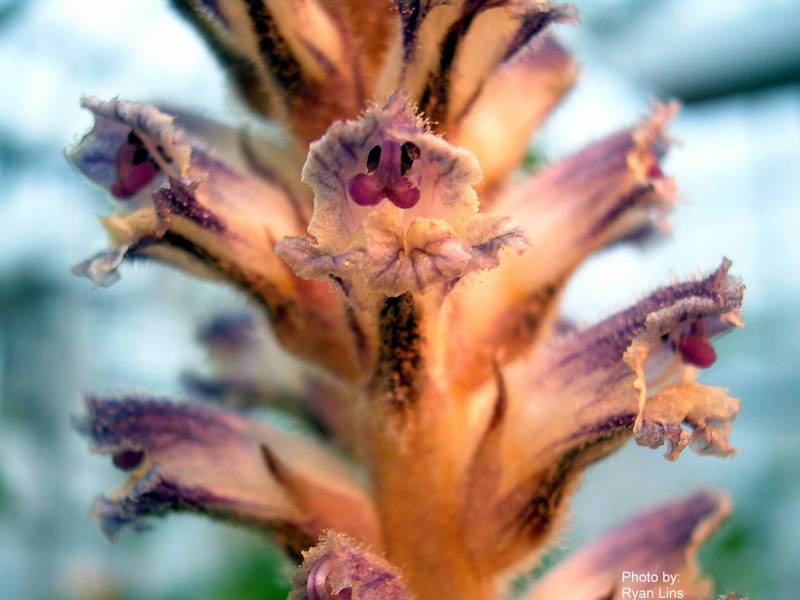Hosted by the University of Washington Herbarium, Burke Museum
Publication: Engl. Bot. 6: pl. 422. 1797.
Origin: Introduced from Europe
Herbarium search: CPNWH
Notes: FNA17: "Orobanche minor has been documented most frequently parasitizing introduced clovers (mainly Trifolium arvense and T. repens), and collected rarely on Crotalaria (J. W. Thieret 1971) and Vicia. It also has been recorded, at least historically, on a variety of cultivated hosts in the region, including hemp, carrots (Daucus carota), tobacco, geraniums (Pelargonium spp.), and Petunia spp. Allegedly, the species is toxic to livestock (Thieret). The sole specimen from Idaho (J. A. Allen s.n., 1875, NY) lacks locality data; if the provenance is correct, the elevational range would be extended upward. European authors have recognized a number of infrataxa and segregates; for example, F. J. Rumsey and S. L. Jury (1991) provisionally accepted four varieties of Orobanche minor as occurring in the British Isles. However, they noted that little is known about cytological and morphological variation within the complex. Thus, it seems inappropriate to apply an infraspecific classification to the North American plants. A single historical specimen (J. C. Nelson 3337, 25 August 1920, GH) collected from ship’s ballast in the Linnton area of Portland, Oregon, is an unusually stout plant with apparently pale corollas and filaments relatively densely pubescent toward their bases. This plant may represent a record of Orobanche loricata Reichenbach, a European species that parasitizes mainly Picris and other Asteraceae, and does not affect any crop plants. However, specimen condition precludes definitive determination, and the label does not list a host species. Other materials from Oregon have the typical morphology of O. minor."
Last updated 7/9/2020 by David Giblin.

